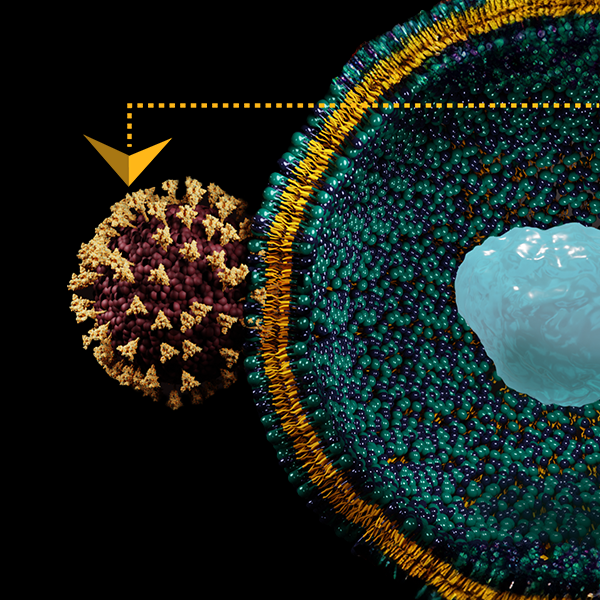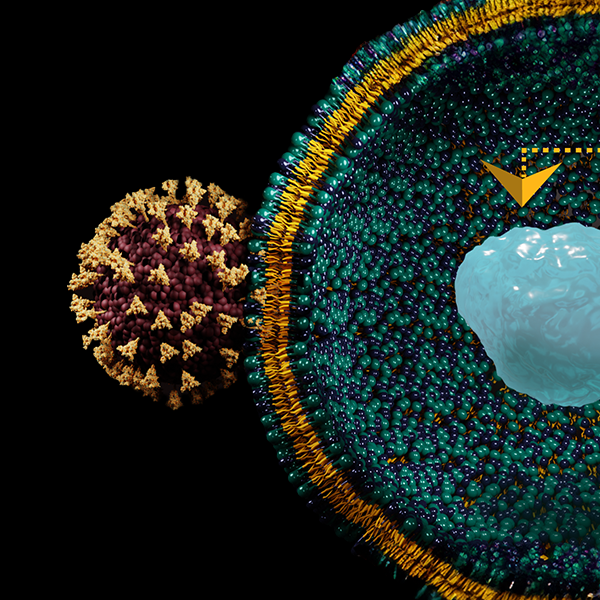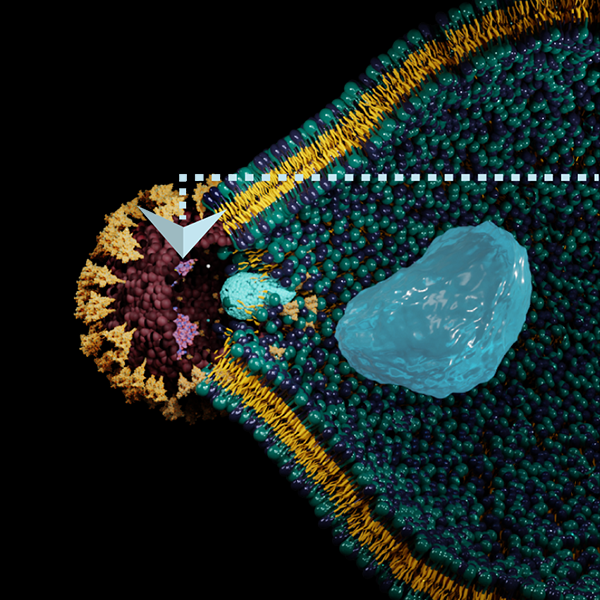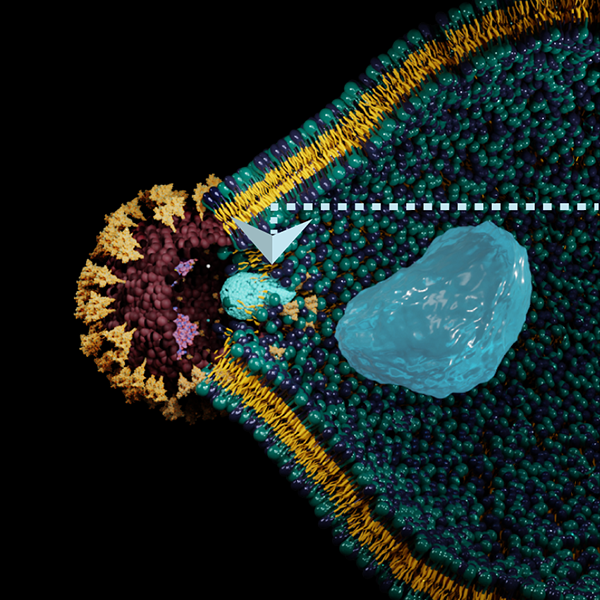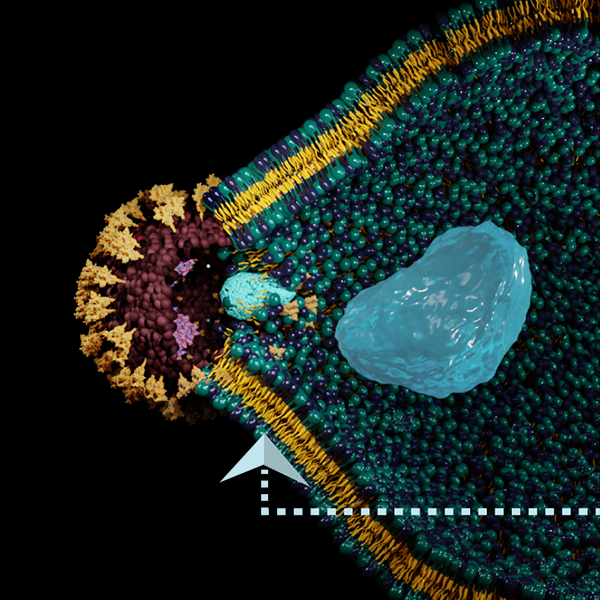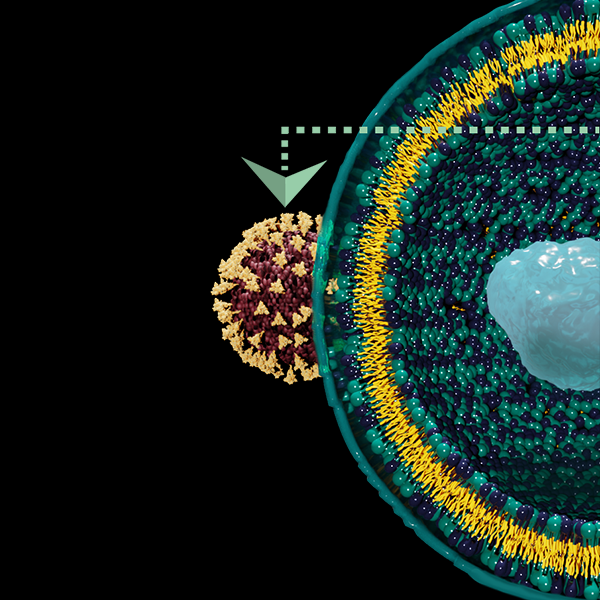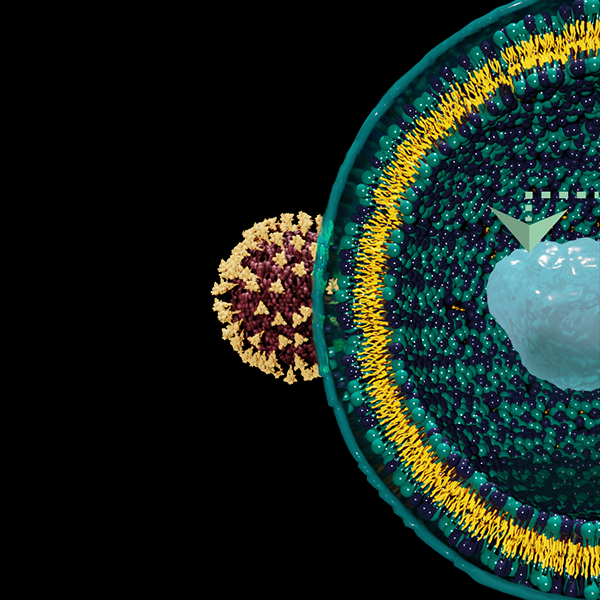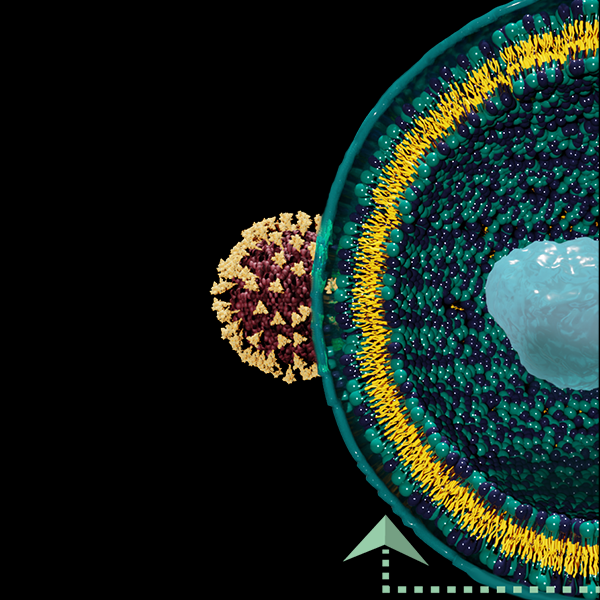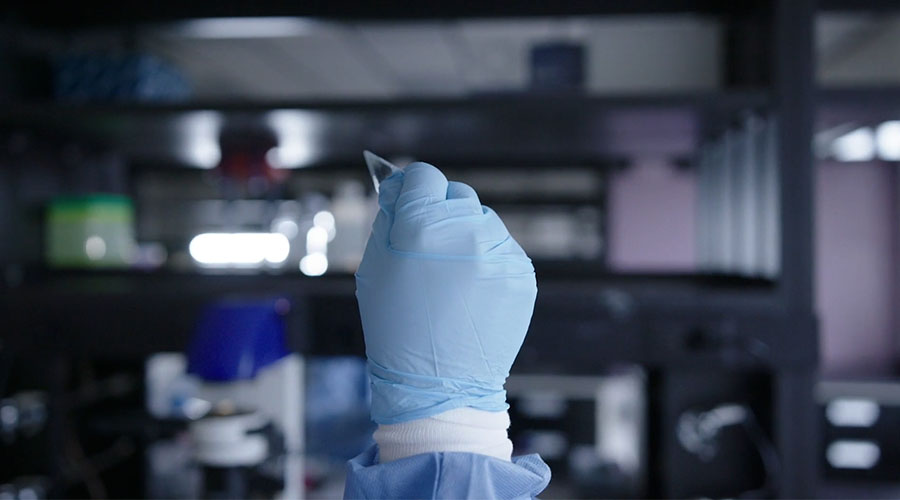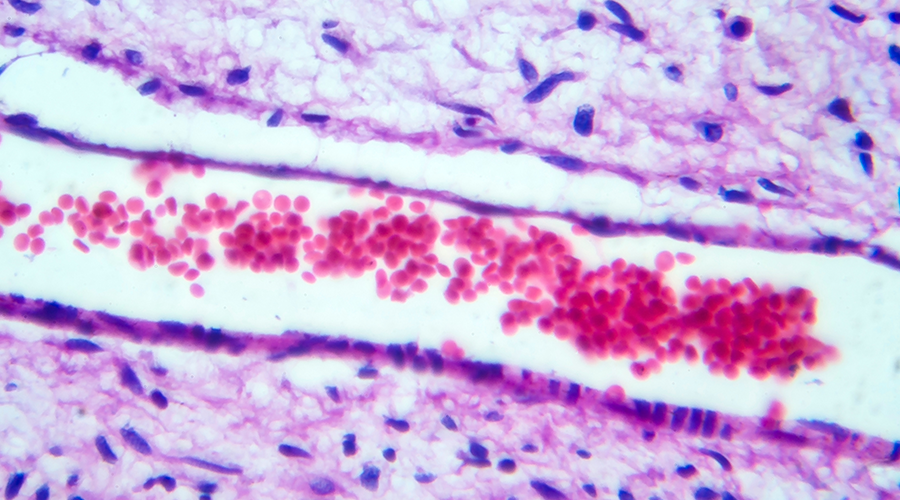WE ASKED
What if the immune system could control HIV like other chronic viral infections?
Through gene therapy, we believe it can.
Using viral vector delivery, we are seeking to give the immune system the tools it needs to resist and ultimately clear the virus.
Our lentiviral technology harnesses HIV’s efficient cell entry and DNA manipulation to deliver protective capabilities directly to the nucleus of T cells.
Three steps to protect against HIV.
Our approach to CD4 T Cell modification.
01
Preventing HIV Binding
HIV binds to CD4 T cells using glycoprotein spikes embedded in the virus surface. CCR5 expression is crucial for HIV’s entry into human cells. The virus uses CCR5, a protein on the surface of white blood cells, as a key co-receptor for entering target immune cells.
The nucleus contains the DNA of the immune cell, and what we are trying to avoid is allowing HIV to install new DNA in the nucleus. This would increase the spread of HIV in the body and can eventually lead to AIDS.
By blocking CCR5, we hope to make the cell resistant to HIV’s entry, thereby preventing new infections.
02
Inhibiting HIV Replication
Once it binds, HIV and the CD4 T cell fuse together, allowing the HIV to infect the cell with genetic material. HIV then inserts itself into the DNA of the CD4 T cell, to enable replication.
If the cell is already infected with HIV, additional miRNAs in AGT103-T target highly-conserved sites in the HIV genome to help stop further replication of the virus.
03
Our Solution
Using our proprietary lentiviral technology, we are leveraging this same mechanism to deliver modifying miRNAs to a person’s CD4 T cells, which we believe will help them become resistant to HIV’s entry and propagation of infection.
Our Pipeline
Treatment Approach
Diagnostic
Our Pipeline
AGT-103-T
Phase Ia
AGT-103-T Vaccine
Preclinical
AGT-103-T+
Preclinical
AGT-104-TsCD4
Preclinical
AGT-105-T
Early Discovery
AGT-103-T SEQ
Early Discovery
Backed by a robust patent portfolio.
Our HIV technologies are covered by an extensive patent portfolio. DLA Piper Global Law Firm and Snell and Wilmer serve as our patent counsel.



